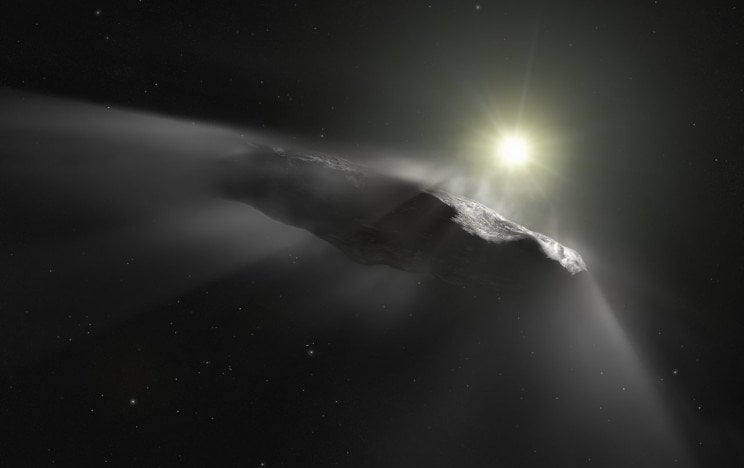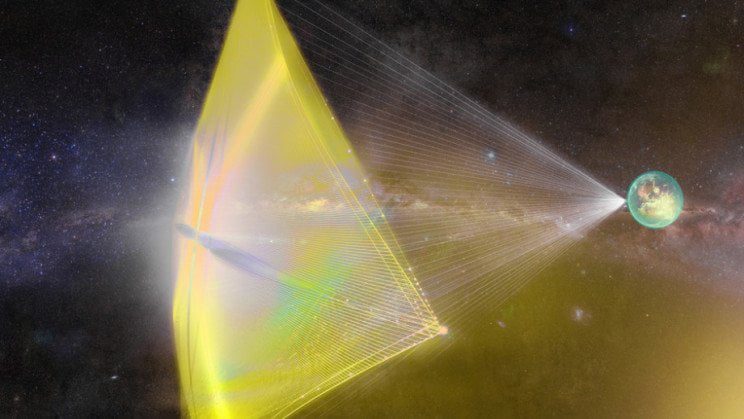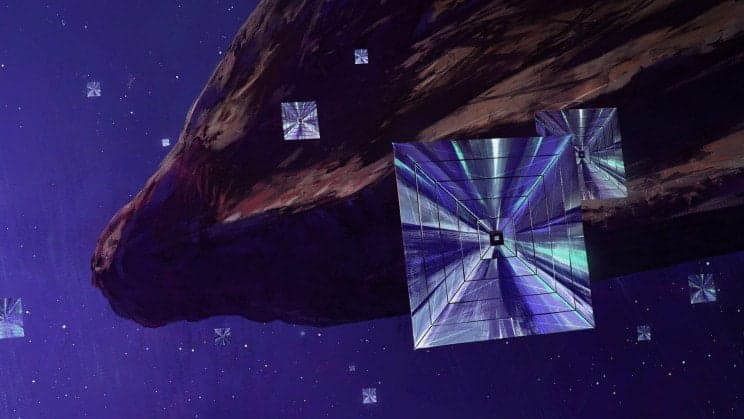Some scientists think that the first interstellar object discovered in our solar system, Oumuamua, could be an extraterrestrial spacecraft. Someone else (most, to be honest) thinks it might just be a cigar-shaped rock. Whatever it is, however, Oumuamua has sprung away too fast for us to understand.
Many scientists have given up hope of knowing the real answer, but one team has prepared a daring mission to send a spacecraft into the distant space object as it moves further and further from Earth, according to Forbes. Why Oumuamua runs, if it were not understood. Crazy, too. But let's take a step back to understand more about what some scientists even hypothesize is an alien solar sail, or something similar.

Chasing the 'extraordinary' Oumuamua
On October 19, 2017, Pan-STARRS1 Near-Earth Object monitoring discovered Oumumaua, an object unlike any previously identified asteroid in our solar system.
Shortly after the first observation, Oumuamua changed speed, drifting off the originally planned path and leaving no traces of debris in its wake. A Harvard astrophysicist, Professor Avi Loeb, he later famously suggested that Oumuamua were an interstellar alien spaceship, or a piece thereof.
Oumuamua is now out of reach of our most powerful telescopes, but these discrepancies are too intriguing not to pursue. This is why, in an attempt to understand, a group of astronomers fromInitiative for Interstellar Studies (I4IS) published a new search proposing the Lyra Project, a mission to send a solar sail probe, reach and study Oumuamua before losing it forever in the cosmos.

What could it be?
“There are many theories to explain the nature of Oumuamua. They include an aggregate of fractal dust, a hydrogen iceberg, a nitrogen iceberg, an alien solar sail, fragments of a tidally destroyed planet,” the authors of the article write.
All the explanations about Oumuamua have one thing in common: they are extraordinary (especially that of the alien solar sail, I must say).
Help from Jupiter
The new paper envisages the launch of a mission in 6 years, at the beginning of 2028, to reach Oumuamua between 2050 and 2054. The solar sail would orbit the Earth for the first four years, and then receive a gravitational pull from Venus and Jupiter and set off on his journey to the mysterious space object.
The technology to do it? It's already there. The solar sails have proven to work from the proof-of-concept mission Light Sail 2 of the Planetary Society, originally intended for the 2017 asteroid: they would help power the spacecraft on its way to Oumuamua. The mission illustrated in the study would use a photon sail at least partially powered by a laser on Earth, similar to the concept of Breakthrough Starshot for a light sailing probe that could reach our nearest star system, Alpha Centauri, within two decades of launch.
Oumuamua, this is not the first mission proposed
Although other research teams have proposed missions to Oumuamua, most of them have relied on performing a Oberth maneuver around the Sun to increase their speed. Too much heat, too much radiation. For this reason the paper just presented (which would exploit the gravity of Jupiter) has more feasibility.
All that remains is to wait for the right alignment of Jupiter (2028, in fact) and off we go on a crazy race after Oumuamua: the strangest "space splinter" ever seen.


